
Table of Contents
Q: Is CATV the same as cable TV?
Q: What are the components of a cable TV system?
Q: Cable TV system block diagram
Q: How to connect the CATV signal amplifier?
Q: How to connect the CATV optical receiver?
Q: How to connect the CATV optical transmitter?
Q: How to build your own cable TV system?
Q: Which cable TV provider is the best?
Q: Difference between terrestrial and cable TV
Q: Difference between satellite and cable TV
Q: Difference between IPTV and cable TV
4. Cable TV systems for hotels
Q: Which devices are used for the Hotel cable system?
CATV is the acronym for Community Access Television, or the now more widely known cable television. CATV uses radio frequency signals transmitted through coaxial cable to deliver broadcasted programming to consumers.[source1]
CATV in American English
community antenna television: a cable television system that receives television broadcasts by the antenna and relays them by cable to paying subscribers in areas where direct reception is either poor or not possible.[source2]
What does CATV stand for in the UK?
abbreviation. abbreviation community antenna television (= cable television)[source3]
Yes, a cable channel (sometimes known as a cable network) is a television network available via cable television. Many of the same channels are distributed through satellite television. Alternative terms include "non-broadcast channel" or "programming service", the latter being mainly used in legal contexts. The abbreviation "CATV" is used in the US for cable television and originally stood for community antenna television, from cable television's origins in 1948; in areas where over-the-air TV reception was limited by distance from transmitters or mountainous terrain, large community antennas were constructed, and cable was run from them to individual homes.[source4]
What does CATV mean on your TV?
Media companies, large media conglomerates by region, also include community-focused media companies.
TV stations broadcasting, cable Operators, TV program providers, etc.
CATV system is a network that distributes television programming to subscribers using a combination of transmission technology and infrastructure. It works by receiving broadcast signals from various channels, converting them into a format suitable for distribution, and then transmitting the signals through a network of cables to connected televisions.
Cable TV systems are a popular method for distributing television programming to a group of viewers. The primary components of a cable TV system are the headend, Coaxial Cable, Amplifier, and Set-Top Box.
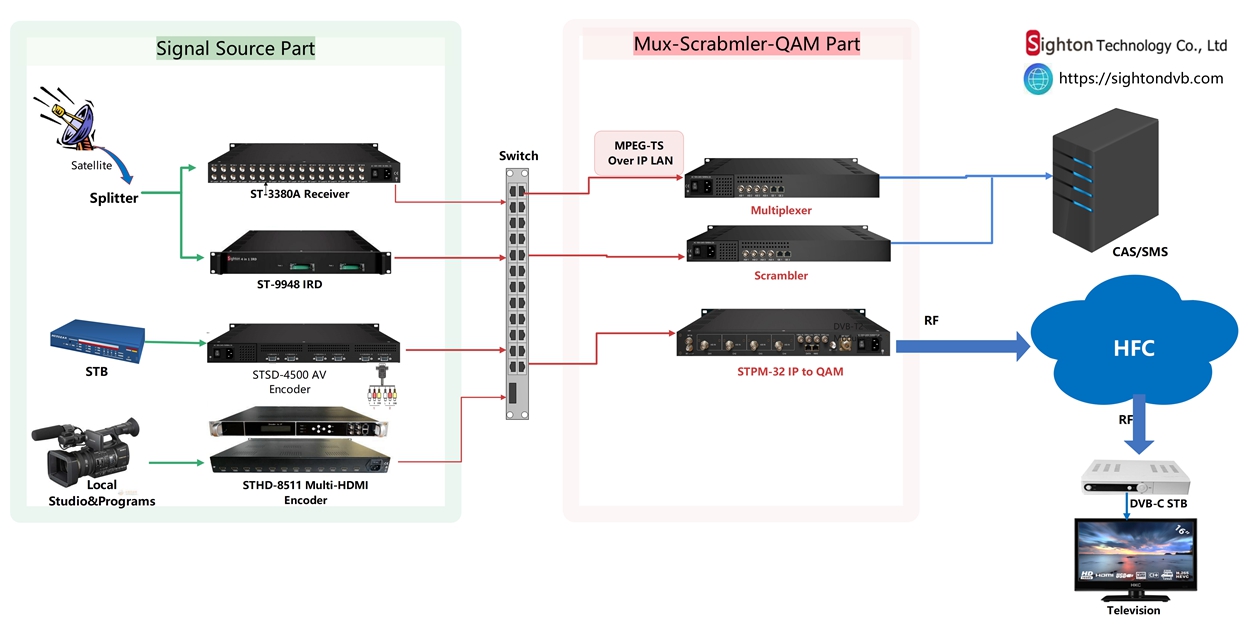
A cable TV system is a network that distributes television programming to subscribers using a combination of transmission technology and infrastructure. It works by receiving broadcast signals from various channels, converting them into a format suitable for distribution, and then transmitting the signals through a network of cables to connected televisions.
The cable TV system is made up of several key components.
The Headend is the central hub where television signals are received, processed, and distributed. The devices include satellite receivers(receiving programs from satellite), encoders (encoding audio/video signals and output ts streaming), modulators (modulation ts streaming to RF signal) including mux-scramblers.
HFC network stands for Hybrid Fiber Coaxial Network, which indicates that Fiber Network and Coaxial Network both are used in this network.
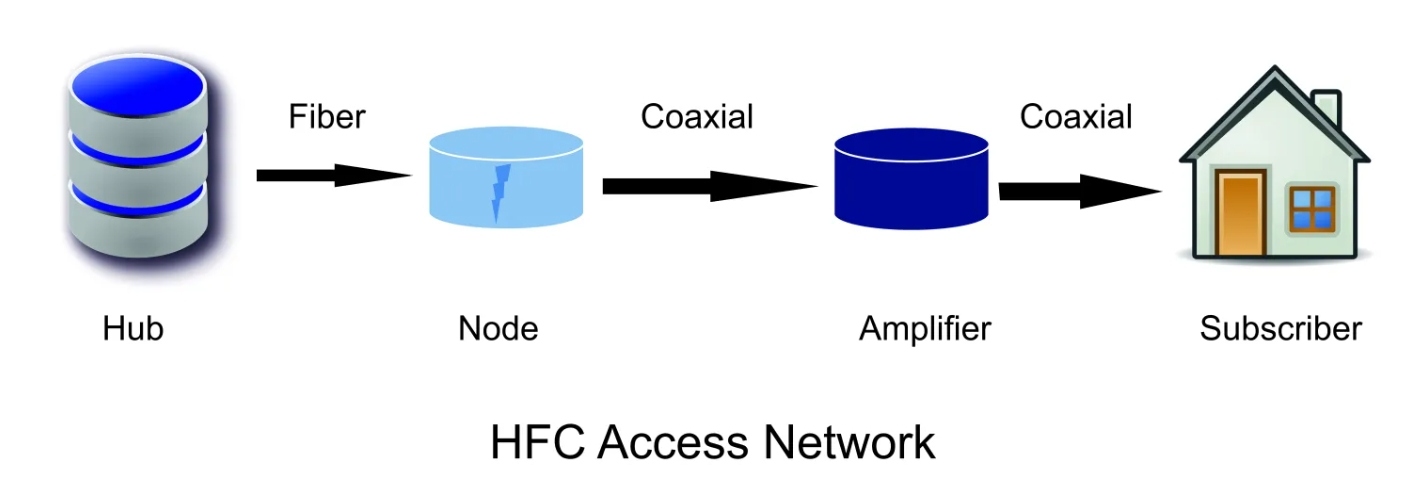
Coaxial cable is the most common medium for transmitting cable TV signals. It consists of a central copper conductor surrounded by a layer of insulation, followed by a woven or foil shield and an outer plastic cover. Coaxial cables transmit the radio frequency (RF) signals carrying the television programming. They have a high shielding capability that prevents interference from external signal sources, ensuring a clear and reliable signal.
Amplifiers are critical components within a cable TV system, serving to maintain signal strength throughout the distribution network. Due to signal attenuation (gradual weakening) as the signal travels through coaxial cables, amplifiers are strategically placed along the network to boost the signal strength as needed. They help ensure that subscribers receive a high-quality signal, free of degradation and distortion.
If you want to know more working of HFC Network, click here
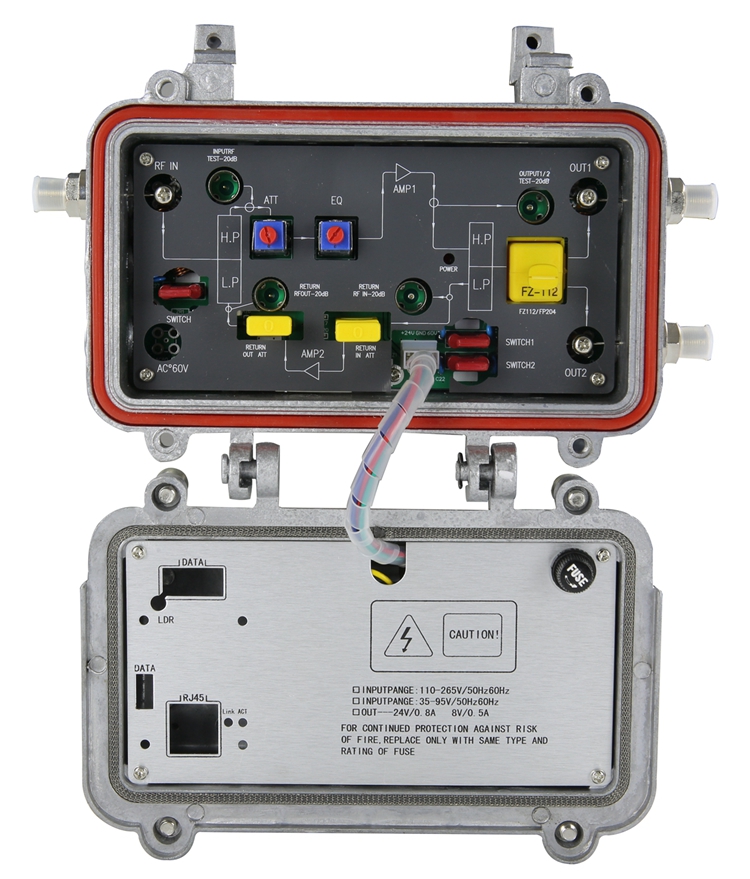
A. Hang the amplifier on the cable and tighten the fixing bolt. Connect the input cable and output cable.
B. Power Supply
For the 220V Amplifier, after confirming that the enclosure is well grounded, insert the power cord of the amplifier into the 220V power socket.
For the 60V amplifier, selection of A feeder socket: according to the actual situation of the power supply system, an appropriate feeder socket is set to achieve different ports of power supply.

C. Connect the test instrument to output 1 or branch output (power off in advance to ensure that the output is not live).
D. Adjust the equalizer until the transmission channel is close to the signal level of the lowest channel or reaches the designed equalization.
F. Adjust the attenuator so that the output level reaches the design level (<102dBuV).
The optical receiver is a device that converts the received cable TV RF optical signal into an electrical signal to achieve long-distance transmission.
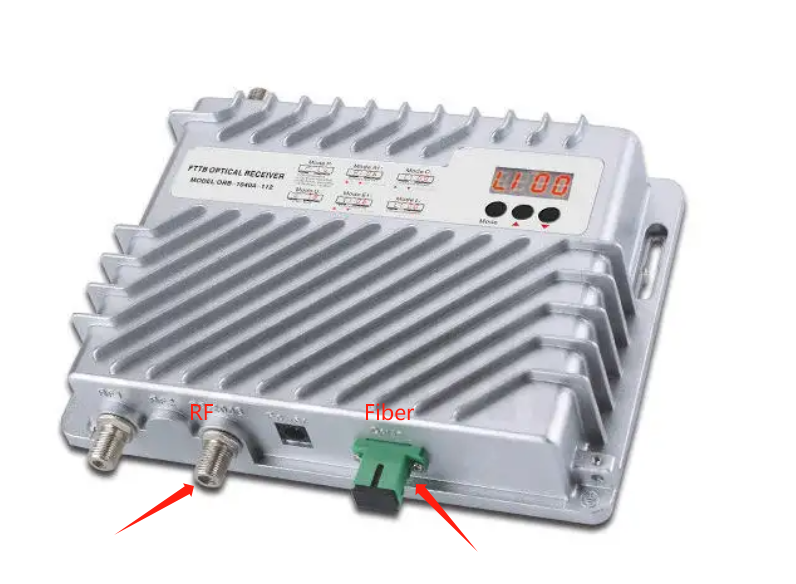
Its input port is a tuner connected to the coaxial, and its output port is connected to an optical fiber.
The function of the optical receiver is exactly the opposite
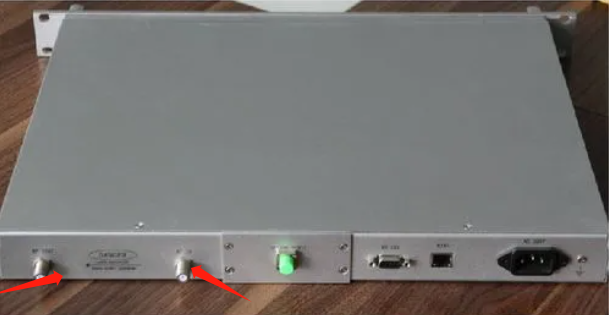
Optical transmitter, the input is RF, and the output is optical fiber.
The Set-Top Box (STB) is the device that resides at the subscriber's premises and connects to their television set. It receives the RF signals from the cable system and decodes the television programming contained within it. The STB converts the signals into audio and video formats that can be displayed on the subscriber's TV. Modern set-top boxes often include advanced features such as digital video recording (DVR), video on demand (VOD), and interactive program guides (IPGs).
If you are a community-focused media company or hotel owner who needs to build your own cable TV system within an area, consider getting your programming not from a cable provider. How to build your own cable TV system? Input cost and cable system stability need to be prioritized.
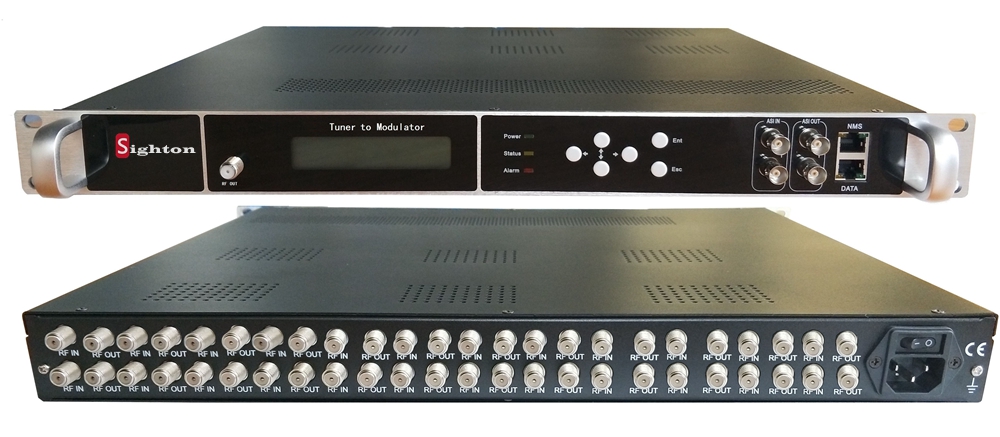
With the development of technology, highly integrated and independent module-designed front-end processing equipment with multifunction and high cost-effectiveness has replaced equipment, that is only able to process one channel program and support a single function.
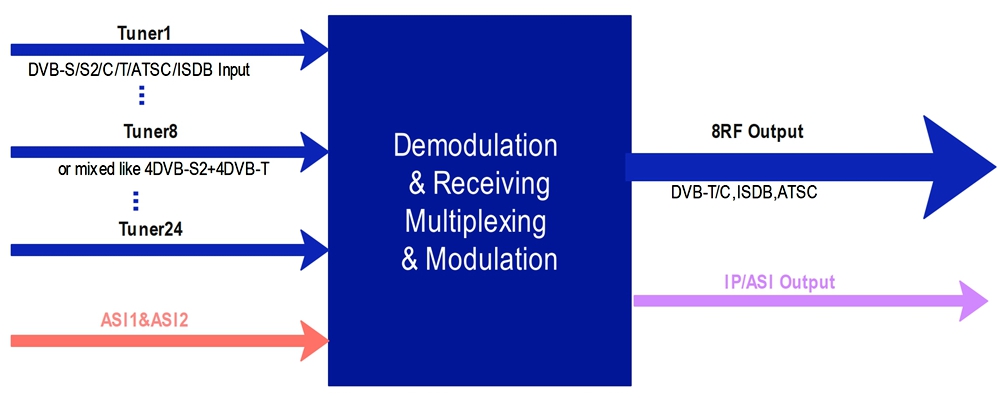
It supports 4/8/12/16/20/24 DVB-S/S2 as input, 4tuner is in one module, each module is no-interfering, and easy to facilitate later maintenance. The device integrated receiving, demodulation, multiplexing, and modulation functions, replacing receiver, multiplexer, and modulator.
The quality is guaranteed. Usually, a piece of equipment can be used for 5 to 10 years or even longer, and lifetime technical support is very important.
The difference between terrestrial wireless systems and cable TV systems: mainly the difference in transmission methods. The processing equipment for the signal source is the same, except for the modulation standard of the modulator. Cable TV is through coaxial transmission, and the terminal uses DVB-C set-top box to decode. For terrestrial TV system needs to build a high tower, use a transmitter to transmit signals, and use an antenna and a receiver at the terminal within the coverage of the wireless signal.
The satellite system modulates the TV signal through the professional DVB-S2 modulator, connects it to the up-converter, and transmits the program to the satellite.
Cable TV uses fiber and Coaxial to deliver programs, while IPTV uses internet-based transmission to deliver content.IPTV provides interactive features such as time-shifting and video-on-demand. It is more personalized.
When building TV systems in small hotels, like residential hostels or medium-sized hotels, low investment costs are required. It can meet the functions of watching multi-channel live broadcasts and advertising for hotel marketing.
Usually, a trans-modulator would be recommended, which receives the program from the satellite and multiplex, modulating and output RF to coaxial cable. As the device we mentioned above How to build your own cable TV system?
Or use a multi-channel encoder modulator all-in-one with a cost-effective price.
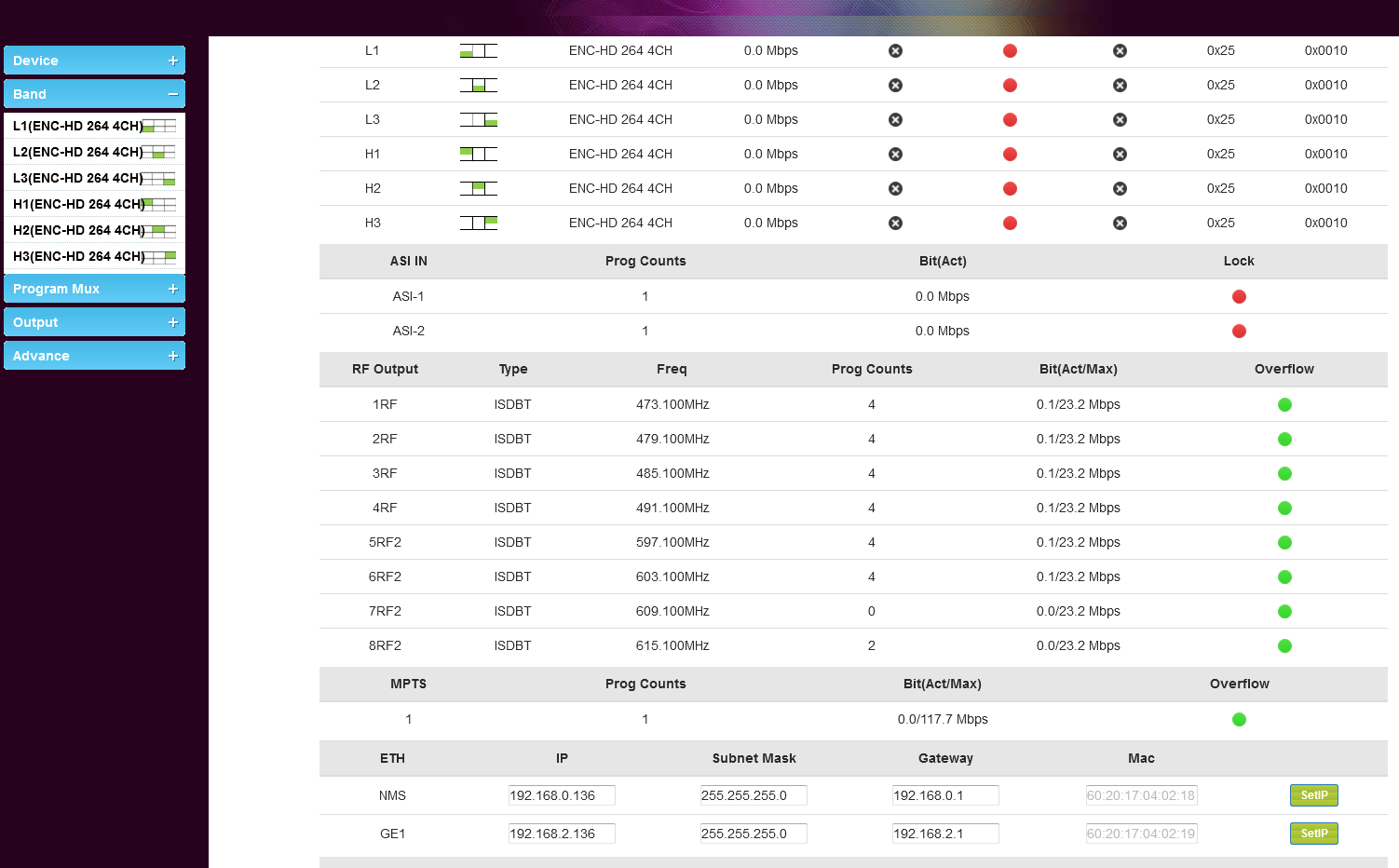
One unit can output up to 24 HD channels. And meet the hotel's promotional notices and advertising needs.
Support OSD (logo/QR Code/Caption) insertion (developing)
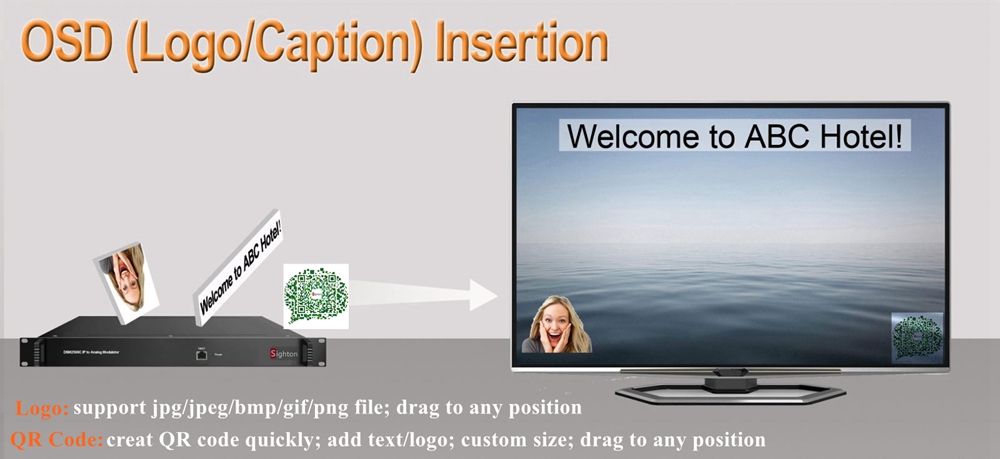
We can edit it in the web management of the device.
The simple hotel TV system requires only 1 or 2 units of encoder and modulator in the front end to deal with signal sources. The unit price for a 4HDMI Encoder Modulator is about $800~$1000. For the SD Encoder Modulator, the cost is cheaper. The price of a 24HDMI Encoder & Modulator is $2000~$3000, depending on the details parameter.

Configure a corresponding number of set-top boxes on the terminal